Harishyam Arts Blog
Traditional vs Modern Wooden Temples: Which Suits Your Space?
By Lakshay Sharma | On 20 October, 2025 | Views
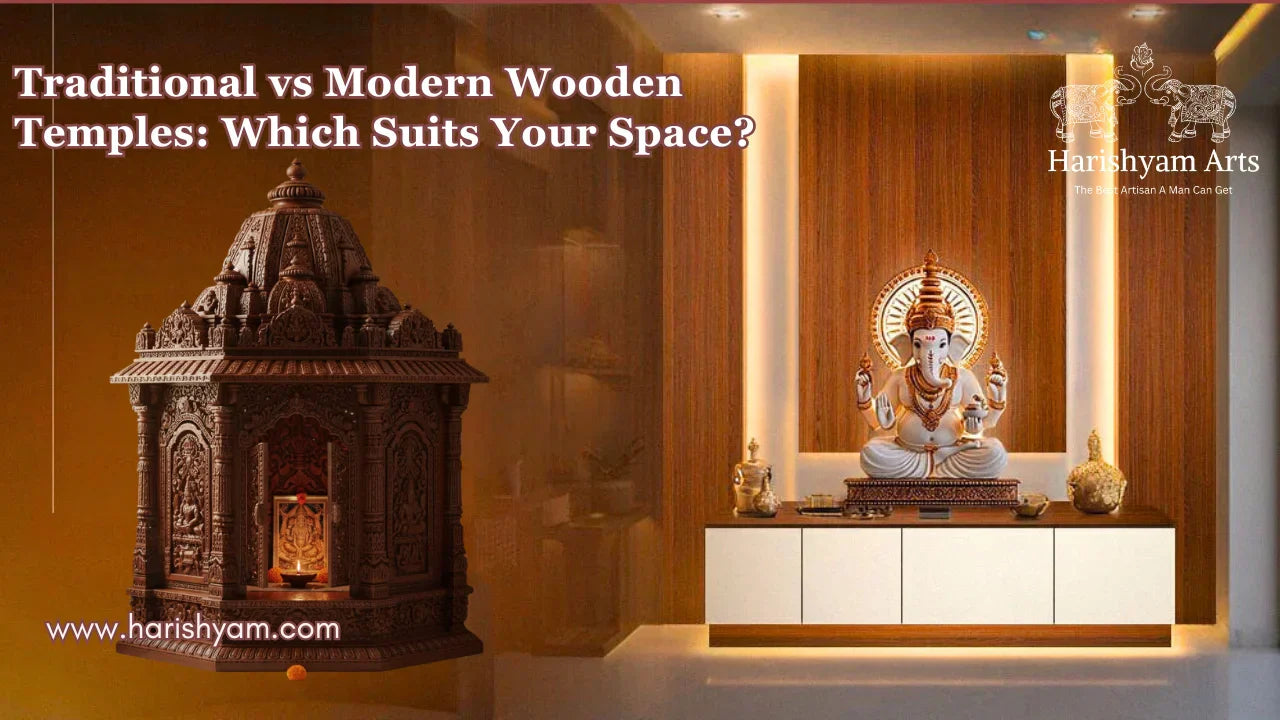
Creating a sacred space in your home is more than just interior décor — it’s about setting up a spiritual corner that radiates peace, positivity, and devotion. A wooden home temple (mandir) not only elevates your home’s aesthetic but also brings spiritual energy.
When it comes to choosing a mandir for home, homeowners often face the dilemma: traditional or modern design? This guide will help you understand both styles, their types, buying tips, common mistakes to avoid, maintenance, and everything you need to choose the perfect wooden temple for your home.
Why Mandir Design Matters in Home Interiors
The design of your home mandir impacts both your spiritual energy and interior aesthetics. A thoughtfully designed mandir creates harmony between devotion, décor, and positivity.
-
Enhances Positivity: The right mandir radiates calmness and spiritual strength.
-
Aesthetic Balance: Blends divine elements with your home’s décor.
-
Reflects Personality: Whether ornate or minimalist, the design mirrors your style and devotion.
-
Boosts Décor Value: A well-crafted wooden mandir becomes a centerpiece of spiritual and artistic significance.
Traditional Wooden Temples
Traditional wooden temples are inspired by ancient Indian temple architecture, emphasizing rich carvings, domes, and intricate detailing. They are perfect for ethnic décor and families who follow daily rituals.
Features of Traditional Wooden Temples
-
Elaborate carvings of deities, floral patterns, and temple motifs
-
Use of premium woods like Teak, Sheesham, and Rosewood
-
Incorporation of domes, bells, spires (shikhars), and pillars
-
Polished dark finishes for a majestic look
Popular Types of Traditional Wooden Mandirs
-
South Indian Temple Style: Grand domes, carved pillars, and gopuram-inspired designs.
-
Rajasthani Carved Mandir: Intricately hand-carved with royal heritage inspiration.
-
North Indian Dome Mandir: Multiple shikhars, jaali patterns, and elevated platforms.
-
Wall-Mounted Traditional Mandir: Compact design with rich carvings for small homes.
-
Pillar-Style Floor Mandir: Includes beautifully carved wooden pillars and raised platforms.
Modern Wooden Temples
Modern mandirs emphasize minimalism, elegance, and functionality, perfect for contemporary homes with limited space. They blend traditional spirituality with modern design sensibilities.
Features of Modern Wooden Temples
-
Clean lines with minimal ornamentation
-
Compact and modular designs for small spaces
-
Neutral finishes such as white, beige, or light wood
-
LED lighting, glass panels, or Corian tops for a modern touch
Popular Types of Modern Wooden Mandirs
-
Wall-Mounted Wooden Mandir: Space-saving and perfect for apartments.
-
Corner Mandir: Fits neatly into room corners for compact homes.
-
Cabinet-Style Mandir: Modern cabinets with drawers to hide puja essentials.
-
Minimalist Floating Mandir: Sleek wall-mounted design without pillars or domes.
-
LED-Backlit Mandir: Creates a serene ambiance with concealed lighting.
-
Wooden Mandir with Corian Top: Combines wood and modern materials for durability.
Key Differences Between Traditional and Modern Wooden Temples
|
Aspect |
Traditional Wooden Temple |
Modern Wooden Temple |
|
Design |
Ornate carvings, domes, pillars |
Clean lines, minimal detailing |
|
Finish |
Dark polish (Teak, Sheesham) |
Light or neutral tones |
|
Space |
Requires more room |
Compact, space-saving |
|
Décor Compatibility |
Ethnic, classic homes |
Modern or minimal interiors |
|
Features |
Bells, domes, engraved motifs |
LED lights, glass or Corian panels |
|
Maintenance |
Needs regular polishing |
Easy to clean and maintain |
Buying a Wooden Temple Online: Avoid These Mistakes
Purchasing a wooden temple online is convenient but comes with potential pitfalls. Avoid these common mistakes to make the right choice:
-
Ignoring Space and Dimensions: Measure your space before choosing a mandir. Traditional mandirs require more room; modern designs are compact.
-
Overlooking Wood Quality: Opt for premium woods like Teak, Sheesham, or Rosewood for durability.
-
Not Considering Vastu: Ensure placement in the northeast corner for positive energy.
-
Ignoring Seller Credibility: Buy from trusted platforms like Harishyam Arts with verified reviews.
-
Neglecting Maintenance Requirements: Traditional temples need regular polishing; modern mandirs need simple cleaning.
-
Clashing with Home Décor: Match mandir style with interior design.
-
Overlooking Storage for Puja Items: Modern cabinets often include drawers; traditional mandirs may require separate storage.
-
Ignoring Delivery and Installation Policies: Check safe packaging, shipping, and optional installation, especially for large mandirs.
Also Read: Mistake to Avoid While Buying Pooja Mandir for Home
Conclusion
Both traditional and modern wooden temples offer unique advantages. Traditional designs bring heritage and grandeur, while modern designs suit minimalist, urban homes. Your choice depends on space, décor, personal taste, and daily worship needs.
At Harishyam Arts, you’ll find a curated range of wooden temples — from intricately carved traditional mandirs to sleek modern designs. Each piece is handcrafted with devotion, premium wood, and attention to detail to enhance your home’s spiritual aura.
FAQs
Q.1 Which Mandir is Better – Marble or Wooden?
Ans: Choosing between a marble mandir and a wooden mandir depends on your personal preference, style, and home décor. A marble mandir gives a royal and elegant look, is easy to clean, and is ideal for permanent installations. On the other hand, a wooden mandir offers a warm, traditional charm, can be intricately carved, and is portable for smaller spaces. If you prefer luxury and low maintenance, marble is perfect; but if you love craftsmanship and natural texture, wood is the way to go.
Q.2 Which Wood is Good for Mandir?
Ans: When it comes to selecting wood for your home temple, teak (sagwan) and sheesham (Indian rosewood) are considered the best choices. They are strong, termite-resistant, and long-lasting, making them ideal for sacred spaces. Other options like mango wood, cedar, or sandalwood can also be used based on your budget and aesthetic preference. Teak wood mandirs are particularly popular for their durability and auspicious energy.
Q.3 How to Clean a Wooden Mandir at Home?
Ans: Cleaning a wooden mandir requires gentle care to preserve its natural shine and spiritual aura. Start by dusting daily with a soft, dry cloth. Once a week, wipe the surface with a damp cloth and mild soap solution, then dry immediately to prevent moisture absorption. For added luster, apply natural polish or coconut oil once a month. Avoid harsh chemicals or alcohol-based cleaners as they may damage the wood’s finish.
Q.4 Can a Wooden Mandir Be Painted or Varnished?
Ans: Yes, a wooden mandir can definitely be painted or varnished, and doing so not only enhances its visual appeal but also helps protect the wood from dust, oil stains, and daily wear. If you wish to preserve the natural grain and texture of the wood, varnishing is the best option. Choose a clear, non-toxic varnish or natural wood polish (such as linseed or teak oil) to maintain the mandir’s natural look while adding a soft shine.
Q.5 Where Should I Place My Mandir as per Vastu?
Ans: According to Vastu Shastra, the northeast direction (Ishaan corner) is the most auspicious location for a home mandir. This direction is believed to attract positive spiritual energy and divine blessings. If the northeast corner isn’t available, the east or north walls are also considered favorable alternatives.
Creating a sacred space in your home is more than just interior décor — it’s about setting up a spiritual corner that radiates peace, positivity, and devotion. A wooden home temple (mandir) not only elevates your home’s aesthetic but also brings spiritual energy.
When it comes to choosing...

Lakshay Sharma
I’m Lakshay Sharma, a writer with a deep passion for Hindu mythology, Vastu Shastra, and home interiors. I enjoy exploring the rich traditions of Hindu gods and goddesses, sharing insights into Vastu principles, and offering guidance on creating sacred spaces like Puja Mandirs. Through my writing, I aim to inspire harmony and spiritual well-being, blending traditional knowledge with modern perspectives.
Harishyam Arts | Jaipur
Related Blogs

Who is Parashvanath? The Life and Legacy of Jainism’s 23rd Tirthankara
Lakshay Sharma | November 22, 2025
Faith and spirituality are cornerstones of Indian tradition, and Jainism stand...
Read More...
How to Choose Between Carved and Minimalistic Wooden Mandirs
Lakshay Sharma | November 21, 2025
A home mandir (temple) is far more than just a piece of furniture; it is the s...
Read More...
How to clean silver god idols at home
Lakshay Sharma | November 21, 2025
At Harishyam Arts, we understand the spiritual and aesthetic significance of s...
Read More...
Are Marble Dust Statues Ideal for Your Home Temple? Pros & Cons
Lakshay Sharma | November 19, 2025
When it comes to selecting statues for your home temple, marble dust statues h...
Read More...
Where to Buy Authentic Marble Gods' Moortis in the USA: A Guide for Devotees and Collectors
Lakshay Sharma | November 19, 2025
For devotees and collectors in the USA seeking authentic marble Hindu god moor...
Read More...
Maa Parvati 108 Names in Sanskrit and English: Their Significance, Meaning, and Mantra Power
Lakshay Sharma | November 17, 2025
The Divine Essence of Maa Parvati
Maa Parvati,...
Read More...
8 Guidelines for Setting Up Your Home Mandir with Wooden Murtis: Location, Selection, and Maintenance.
Lakshay Sharma | November 16, 2025
Introduction: The Divine Mother of Strength and Compassion

Who Was Jain Mahavir? The Life, Teachings, and Legacy of the 24th Tirthankara
Lakshay Sharma | November 15, 2025
Lord Mahavir, the 24th Tirthankara of Jainism, was a spiritual reformer who re...
Read More...
Benefits of Choosing Corian Mandirs Over Marble and Wood
Lakshay Sharma | November 14, 2025
Modern homes today demand elegance, functionality, and easy upkeep — and Coria...
Read More...
White vs. Black Shivling: Which One Is Best for Your Home and Why?
Lakshay Sharma | November 13, 2025
The Shivling, a sacred symbol of Lord Shiva, embodies creation, power, and pur...
Read More...
10 Stunning Marble Handicraft Pieces to Elevate Your Home Décor
Lakshay Sharma | November 12, 2025
Marble handicrafts represent timeless artistry, luxury, and devotion. At Haris...
Read More...
Brass Ganesha Idols as Gifts: Symbolism, Occasions, and Gifting Etiquette
Lakshay Sharma | November 11, 2025
Gifting a brass Ganesha idol is more than a gesture—it's a blessing of prosper...
Read More...
Luxury Kids Room Decor Ideas That Turn Every Space Into a Fairytale Dream
Lakshay Sharma | November 10, 2025
Transforming a child’s room into a luxury fairytale dream combines comfort wit...
Read More...
Why Repainting Your Marble Statue Can Extend Its Life and Beauty
Lakshay Sharma | November 09, 2025
Marble statues are elegant pieces of art that add charm to any home or temple....
Read More...
How to Choose the Perfect Wall-Mounted Wooden Mandir for Your Home
Lakshay Sharma | November 08, 2025
A wall-mounted wooden mandir is more than just a spiritual corner; it’s a blen...
Read More...
Understanding GST on Marble God Statues: A Complete Guide for Buyers and Sellers
Lakshay Sharma | November 07, 2025
Marble god statues are a popular choice for temples, homes, and offices due to...
Read More...
Are Wooden Statues Pest-Resistant? How to Protect Your Wooden Idols from Insects and Damage
Lakshay Sharma | November 06, 2025
Wooden statues have been cherished for centuries due to their natural beauty a...
Read More...
Corian vs Wooden Temples: Which One Should You Choose?
Lakshay Sharma | November 05, 2025
Choosing the perfect temple for your home is more than just selecting a design...
Read More...
How Customised Marble Human Bust Manufacturers Bring Personalities to Life
Lakshay Sharma | November 04, 2025
Crafting a marble human bust is so much more than sculpting a likeness—it's ab...
Read More...
The Power of the Hare Krishna Maha Mantra: Awakening Spiritual Bliss
Lakshay Sharma | November 03, 2025
The Hare Krishna Maha Mantra is a sacred chant that ...
Read More...
The 24 Tirthankaras of Jainism: Names, Symbols, and Significance
Lakshay Sharma | November 02, 2025
In Jainism, the Tirthankaras are revered as divine s...
Read More...
Top 25 Space-Saving Wooden Mandir Ideas for Modern Homes
Lakshay Sharma | November 01, 2025
A pooja mandir is the heart of every Indian home — a sacred corner where peace...
Read More...
What Are the 8 Forms of Lakshmi? | Ashta Lakshmi Meaning and Significance
Lakshay Sharma | October 31, 2025
The Divine Essence of Goddess Lakshmi
Goddess La...
Read More...
The Art of Craftsmanship: How Handmade Brass Statues Are Created
Lakshay Sharma | October 30, 2025
At Harishyam Arts, we celebrate the timeless beauty ...
Read More...
How to Dispose of Broken Marble God Murti
Lakshay Sharma | October 30, 2025
In Hindu tradition, marble murtis represent divine presence and spiritual ener...
Read More...
Wooden Statues vs Marble Statues: Which One Should You Choose?
Lakshay Sharma | October 29, 2025
When it comes to decorating your home or creating a sacred space, choosing the...
Read More...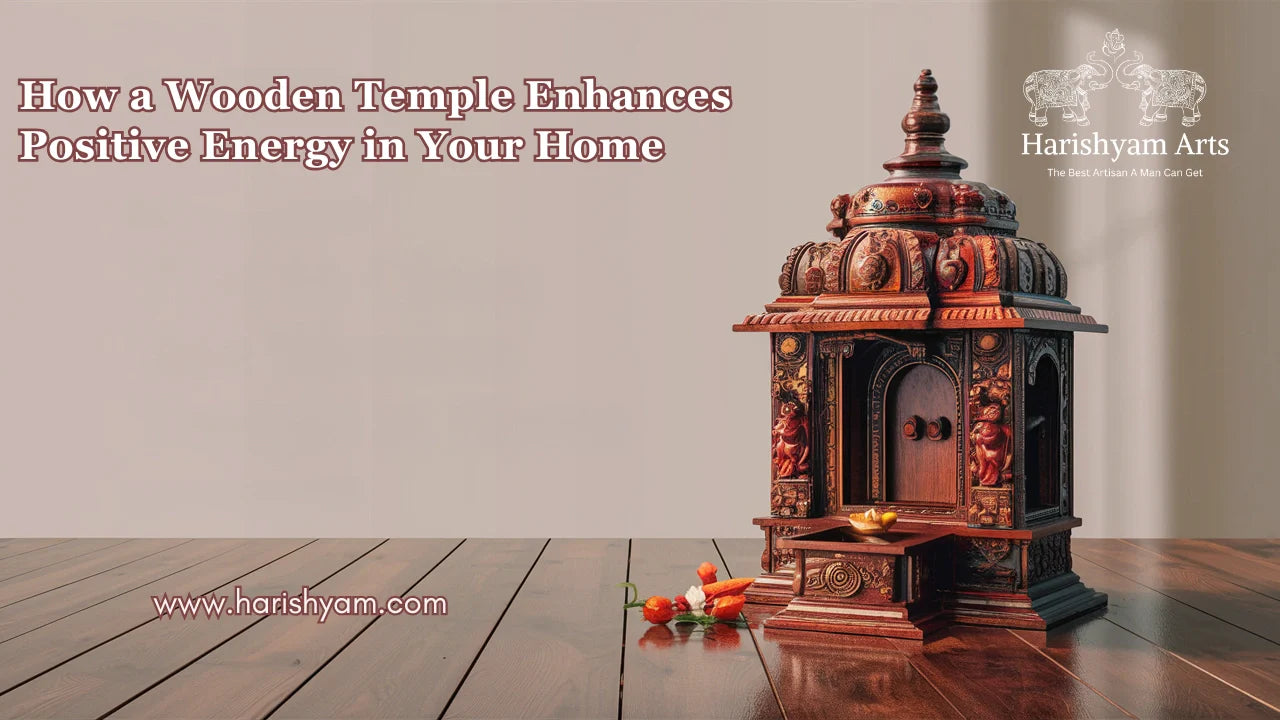
How a Wooden Temple Enhances Positive Energy in Your Home
Lakshay Sharma | October 28, 2025
A home temple isn’t just a decorative corner — it’s the spiritual...
Read More...
Why Lord Krishna is Worshipped in Different Forms Across India
Lakshay Sharma | October 27, 2025
Lord Krishna — the eighth incarnation of Lord Vishnu — is one of the most belo...
Read More...
The Story of Goddess Saraswati: The Embodiment of Wisdom and Knowledge
Lakshay Sharma | October 26, 2025
Among the many deities of the Hindu pantheon, Maa Saraswati Read More...

Top Reasons to Choose Brass Statues for Home Décor and Spiritual Spaces
Lakshay Sharma | October 25, 2025
Home décor today is not only about beauty—it’s about creating a peaceful and m...
Read More...
How long do Corian temples last?
Lakshay Sharma | October 24, 2025
Choosing the right material for a temple at home is important for both aesthet...
Read More...
Why Lord Shiva is Called the Mahadeva – The Supreme God
Lakshay Sharma | October 23, 2025
Hinduism, one of the world’s oldest religions, has a rich pantheon of deities,...
Read More...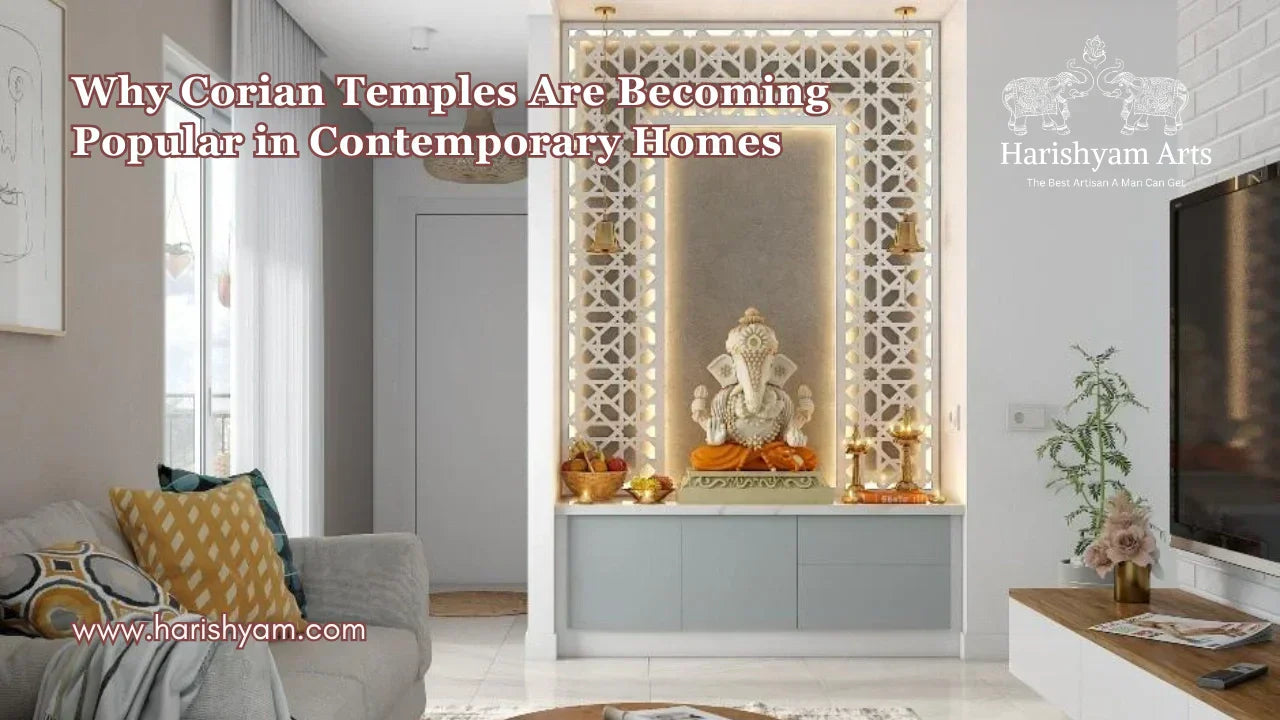
Why Corian Temples Are Becoming Popular in Contemporary Homes
Lakshay Sharma | October 22, 2025
In today’s modern homes, interior décor blends tradition with contemporary sty...
Read More...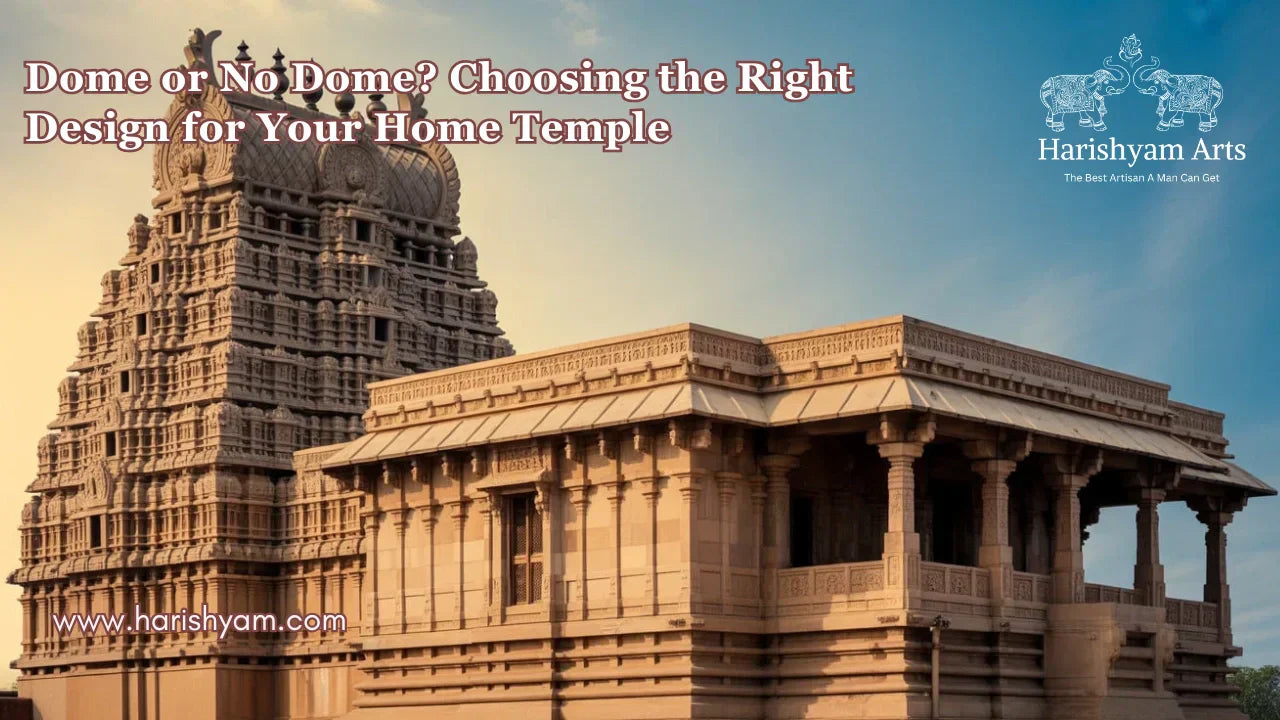
Dome or No Dome? Choosing the Right Design for Your Home Temple
Lakshay Sharma | October 21, 2025
Creating a sacred space at home is a spiritual investment, and the design of y...
Read More...
Traditional vs Modern Wooden Temples: Which Suits Your Space?
Lakshay Sharma | October 20, 2025
Creating a sacred space in your home is more than just interior décor — it’s a...
Read More...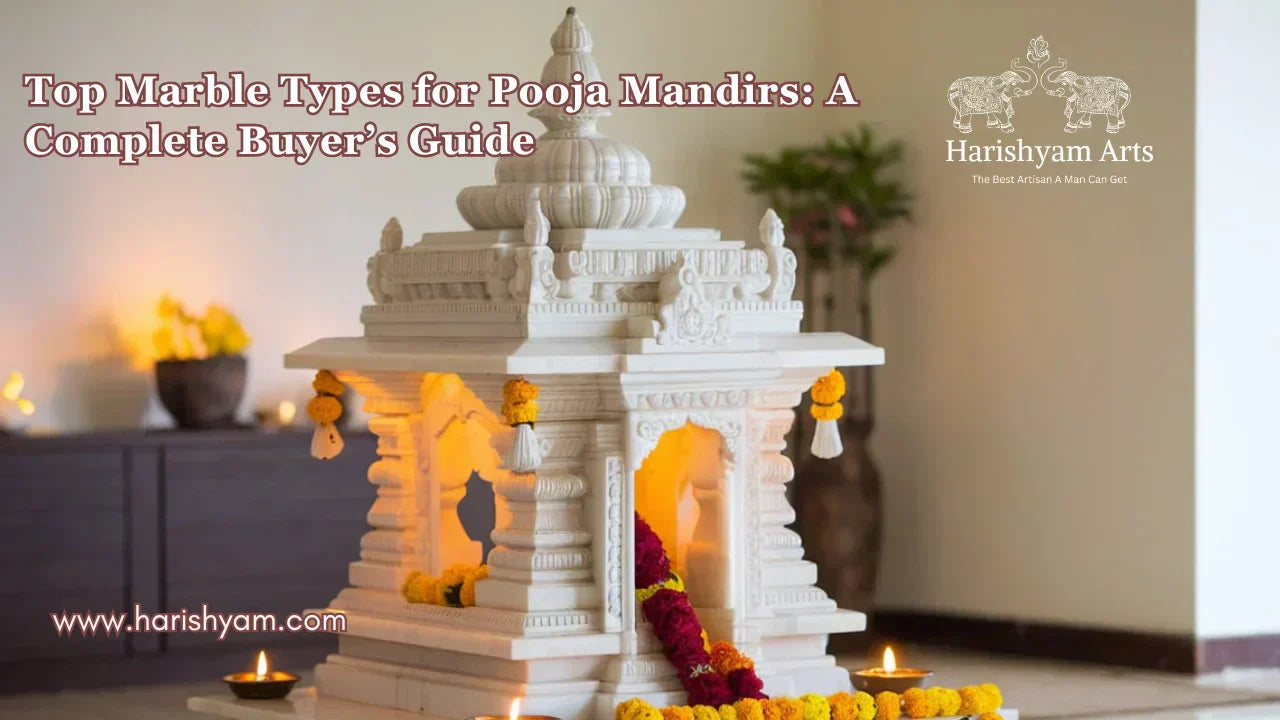
Top Marble Types for Pooja Mandirs: A Complete Buyer’s Guide
Lakshay Sharma | October 19, 2025
A Pooja Mandir is more than just furniture; it is th...
Read More...
The Different Forms of Shiva Statues and their Symbolism
Lakshay Sharma | October 18, 2025
Introduction to the God Shiva Statue
Lord Shiv...
Read More...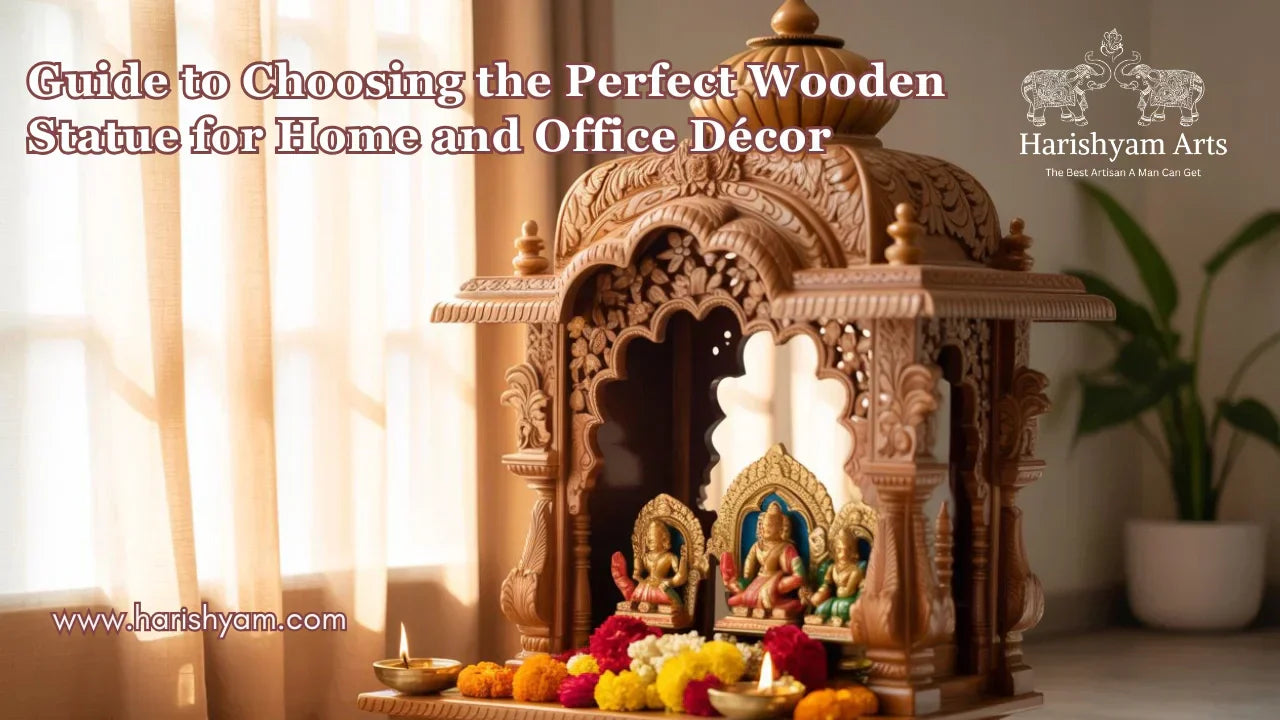
Guide to Choosing the Perfect Wooden Statue for Home and Office Décor
Lakshay Sharma | October 17, 2025
Wooden statues are more than decorative pieces—they are timeless symbols of ar...
Read More...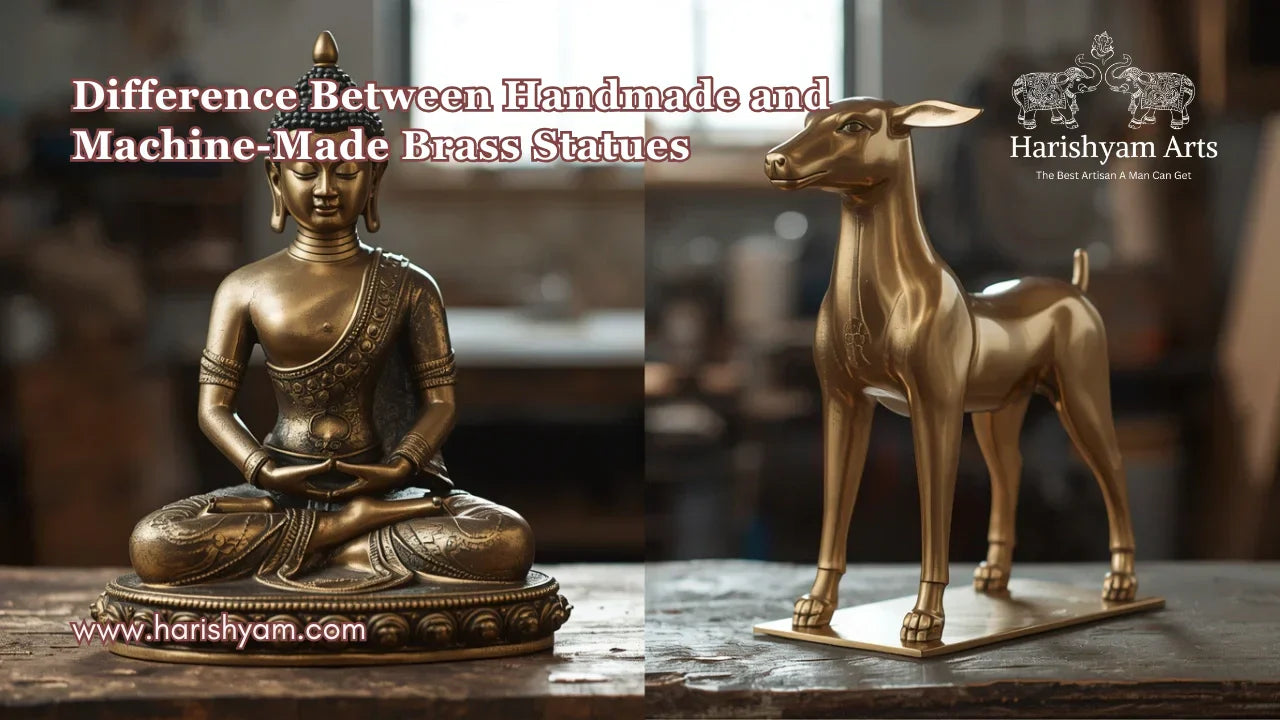
Understanding the Difference Between Handmade and Machine-Made Brass Statues
Lakshay Sharma | October 16, 2025
Brass statues have been a cornerstone of spiritual and decorative art for cent...
Read More...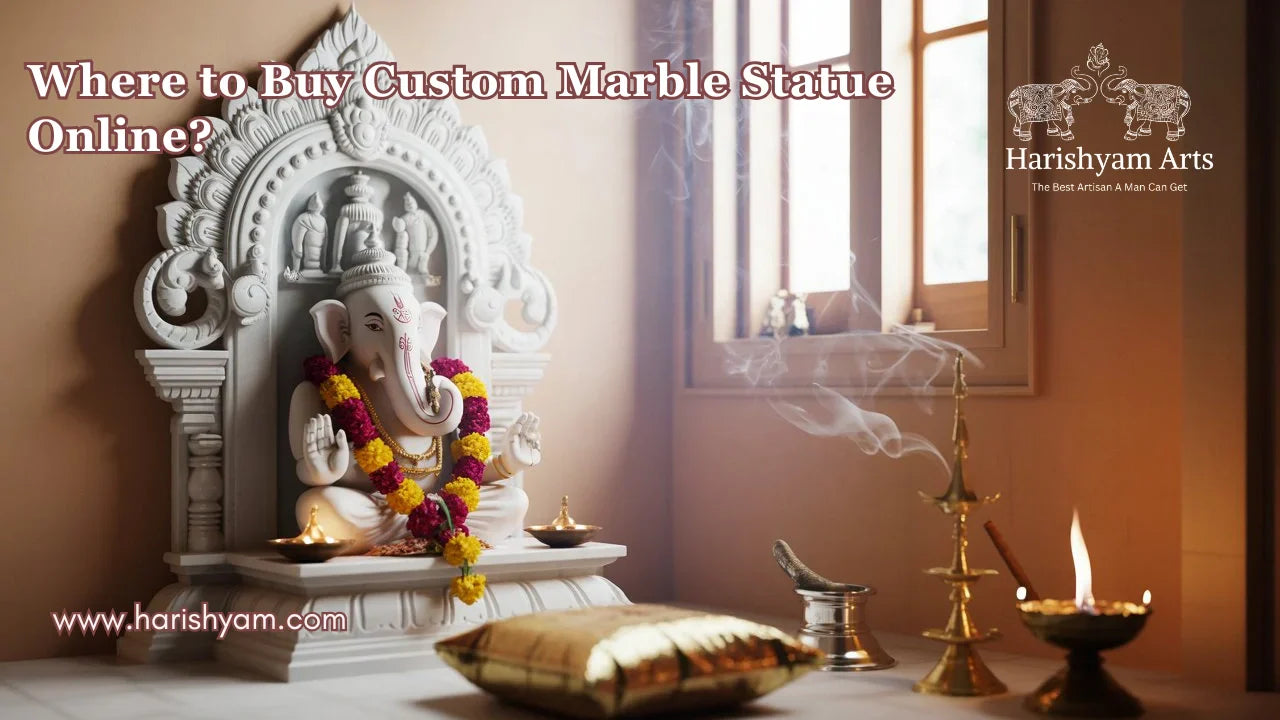
Where to Buy Custom Marble Statue Online? A Complete Guide
Lakshay Sharma | October 15, 2025
Marble statues have always held a special place in Indian homes and temples. T...
Read More...
Mistakes You Shouldn’t Make When Purchasing a Home Temple Online
Lakshay Sharma | October 14, 2025
Buying a home temple online can be an exciting experience — especially with so...
Read More...
Mistakes You Shouldn’t Make When Purchasing a Home Temple Online
Lakshay Sharma | October 14, 2025
Buying a home temple online can be an exciting experience — especially with so...
Read More...
How to Clean and Maintain Wooden Statues at Home
Lakshay Sharma | October 13, 2025
Wooden statues add elegance, tradition, and warmth to any home. From intricate...
Read More...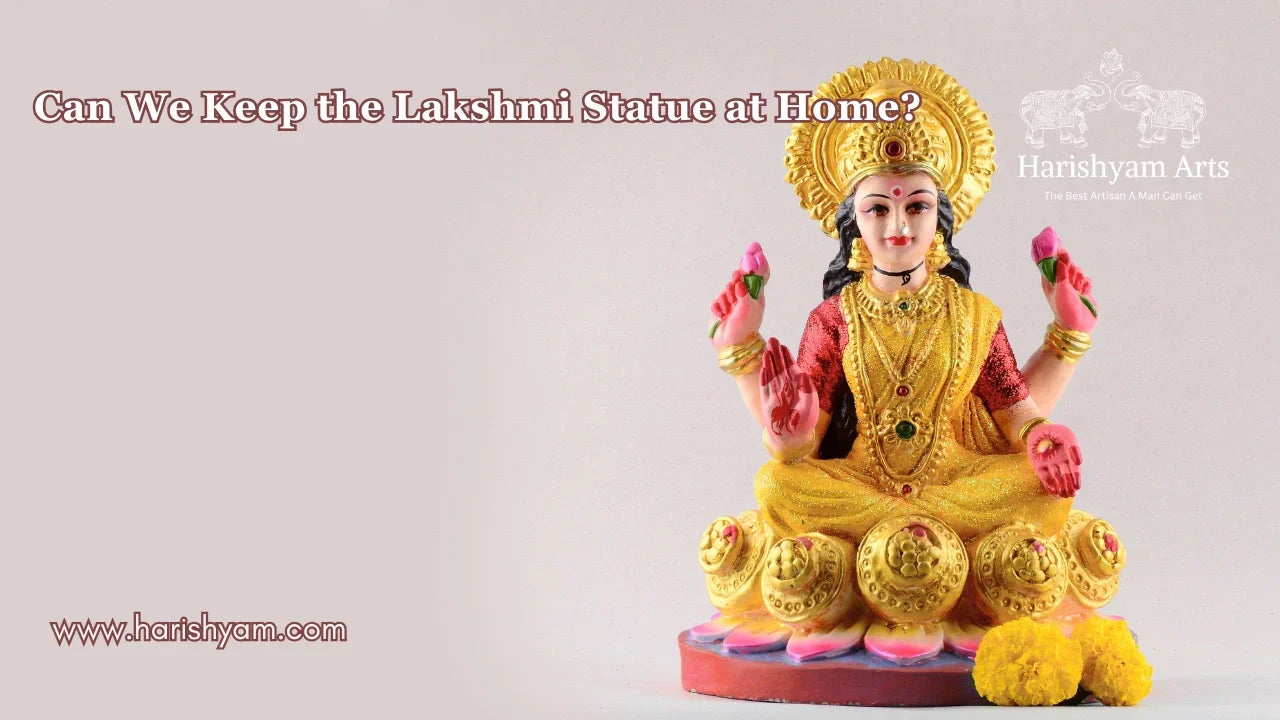
Can We Keep the Lakshmi Statue at Home?
Lakshay Sharma | October 13, 2025
In Hindu tradition, Goddess Lakshmi is worshipped as the divine force of wealt...
Read More...
How to Clean Brass Statues at Home?
Lakshay Sharma | October 12, 2025
Brass statues add a touch of elegance and spirituality to any home. At Harishy...
Read More...
Which Lakshmi Idol is Good for Home? Types, Materials, and Significance
Lakshay Sharma | October 11, 2025
Goddess Lakshmi, the divine symbol of wealth, prosperity, and abu...
Read More...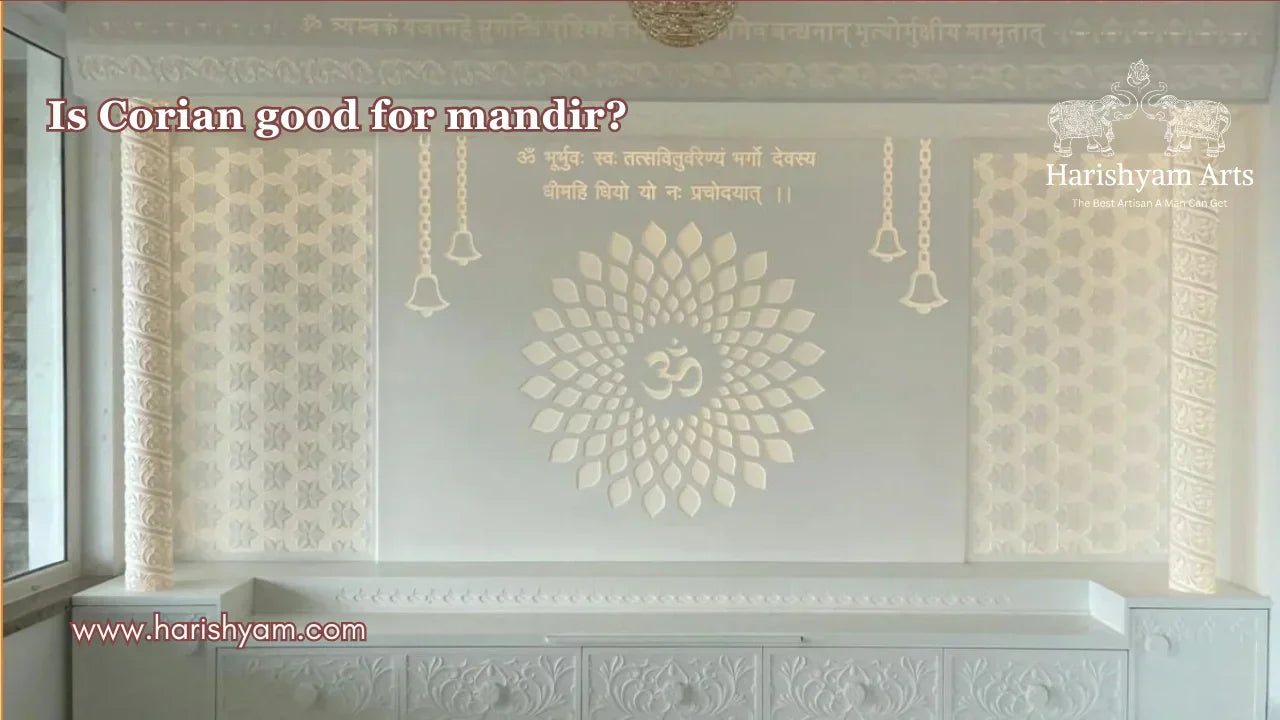
Is Corian Good for Mandir? A Complete Guide
Lakshay Sharma | October 10, 2025
When it comes to designing a home mandir, choosing t...
Read More...
Different Types of Buddha Statues and Their Meanings
Lakshay Sharma | October 09, 2025
Buddha statues are more than just beautiful decorative pieces—they symbolize s...
Read More...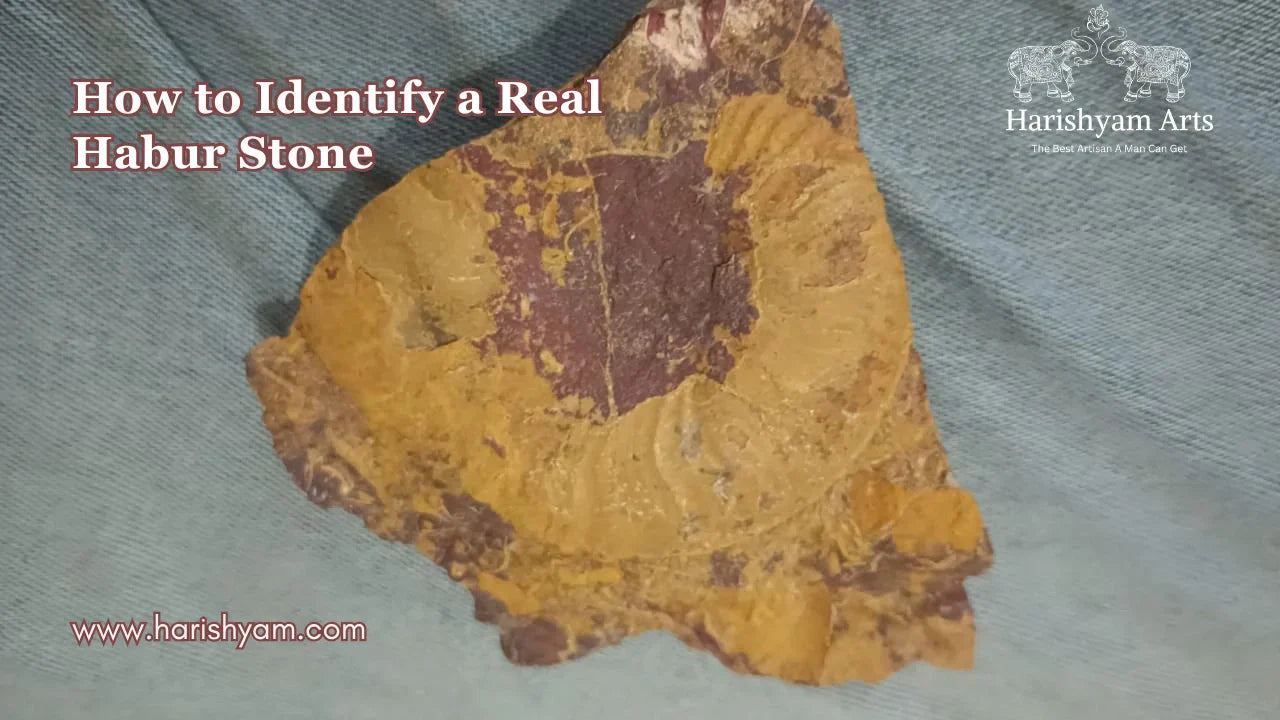
How to Identify a Real Habur Stone? A Complete Guide
Lakshay Sharma | October 08, 2025
Habur stone, known for its mysterious ability to turn milk into curd naturally...
Read More...
How long does Marble Statues Last?
Lakshay Sharma | October 06, 2025
Marble statues can last for centuries, or even thousands of years...
Read More...



